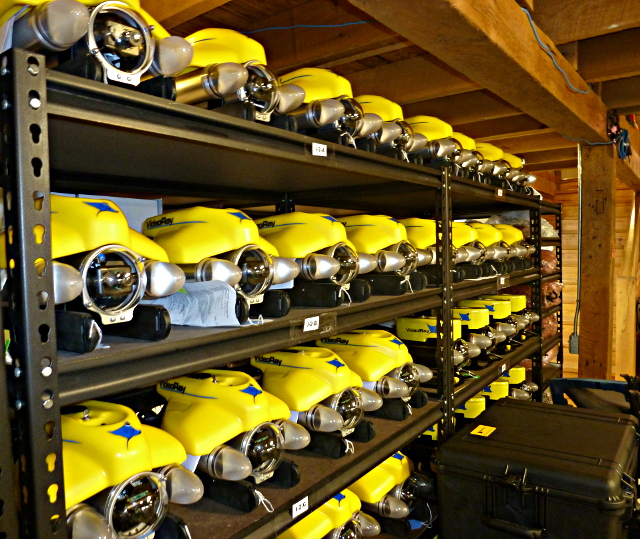|
|
Underwater Vehicles
Vehicles designed to support underwater operations, include ROVs (Remotely Operated Vehicles), AUVs (Autonomous Underwater Vehicles and USVs (Unmanned Surface Vessels). A typical basic ROV includes propulsion, a camera and lights. ROVs use a tether or umbilical cable and are under the direct control of the operator. AUVs are programmed to follow a planned route and use position tracking to navigate their assigned course. USVs can be controlled by an operator, or follow a planned route. ROVs come in different sizes, and are generally classified as "Work Class" or "Inspection Class." Work class ROVs are typically larger and include tooling to perform manipulative tasks such as turning a valve or cutting a pipe, but the smaller inspection class vehicles are being manufactured with ever increasing capabilities beyond simple visual inspections. Their payload capabilities allow them to include sonars, positioning systems and dexterous manipulators. ROVs are also classified by their degrees of freedom, or range of motions. Simple ROVs have 3 degrees of freedom (forward and Back; Yaw left and right; ascend and descend). More advance systems include lateral motion and pitch and roll controls. |



